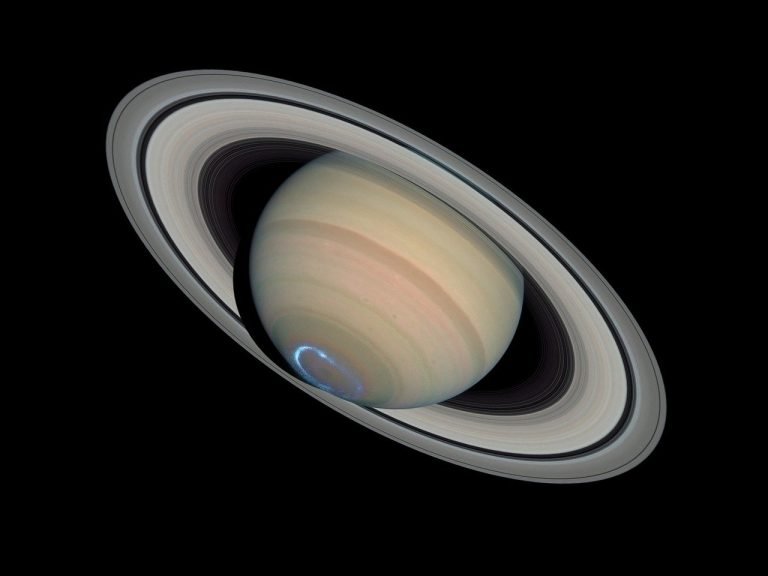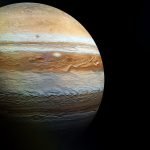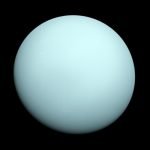Saturn is one of the most iconic planets in our solar system, known for its stunning rings and unique features. As the second-largest planet, Saturn has captivated astronomers and space enthusiasts for generations. In this post, we will explore what Saturn is, its physical characteristics, its orbit, and some interesting facts that highlight its significance.
What is Saturn?
Saturn is the sixth planet from the Sun and is classified as a gas giant. It is famous for its beautiful ring system, making it one of the most recognizable planets in our solar system.
- Size: Saturn has a diameter of about 72,366 miles (116,464 kilometers), making it nearly 9.5 times wider than Earth. Despite its size, Saturn is much less dense than Earth; in fact, it is the least dense planet in our solar system.
- Surface: Like Jupiter, Saturn does not have a solid surface. It is primarily composed of hydrogen and helium gas, with layers of clouds that create its distinctive appearance.
Saturn’s Orbit
Saturn orbits the Sun at an average distance of about 886 million miles (1.4 billion kilometers). It takes approximately 29.5 Earth years to complete one orbit, which means a year on Saturn is nearly 30 times longer than a year on Earth.
- Day Length: A day on Saturn (the time it takes for the planet to rotate once on its axis) is about 10.7 hours. This rapid rotation contributes to its oblate shape, making the planet flatter at the poles and bulging at the equator.
- Seasons: Saturn has a tilt of about 27 degrees, resulting in noticeable seasonal changes that last over seven Earth years.
Unique Features of Saturn
Saturn has several unique characteristics that distinguish it from other planets:
- Ring System: Saturn is best known for its stunning ring system, composed of ice particles, rocky debris, and dust. The rings vary in thickness and are made up of several distinct rings, including the A, B, and C rings.
- Moons: Saturn has over 80 moons, with Titan being the largest. Titan is unique because it has a thick atmosphere and lakes of liquid methane on its surface, making it a fascinating subject for study.
- Storms: Saturn experiences massive storms in its atmosphere, similar to those on Jupiter. These storms can produce high-speed winds and large, swirling clouds.
Read This Also: Planet Jupiter: The Giant of Our Solar System
Interesting Facts About Saturn
Here are some fascinating facts about Saturn that showcase its uniqueness:
- Density: Saturn is so light that it could float in water if there were a bathtub large enough to hold it! Its low density is due to its gaseous composition.
- Hexagonal Storm: At Saturn’s north pole, there is a unique six-sided storm pattern known as the “hexagon.” This atmospheric feature is a mystery, and scientists are still studying how it forms.
- Auroras: Saturn experiences auroras near its poles, similar to those on Earth. These beautiful light displays are caused by solar particles interacting with the planet’s magnetic field.
- Titan’s Atmosphere: Titan, Saturn’s largest moon, has a thick atmosphere that is denser than Earth’s. It is the only moon in the solar system known to have a substantial atmosphere.
- Space Missions: Saturn has been studied by various spacecraft, including the Pioneer and Voyager missions, and most notably the Cassini-Huygens mission, which provided detailed data about Saturn and its moons from 2004 to 2017.
Why is Saturn Important?
Studying Saturn is crucial for several reasons:
- Understanding Gas Giants: Saturn serves as a key model for understanding gas giants in our solar system and beyond. Its atmosphere and ring system provide valuable insights into the formation of these massive planets.
- Exploring Moons: Saturn’s moons, especially Titan, have the potential to host life and provide clues about the conditions necessary for life elsewhere in the universe.
- Planetary Formation: Saturn’s characteristics help scientists understand the processes involved in the formation and evolution of the solar system.
Conclusion
Planet Saturn, with its breathtaking rings and fascinating features, is a captivating subject of study in our solar system. Its unique characteristics and the mysteries surrounding its moons make it a focal point for scientists and space agencies.
The next time you gaze at the night sky and see the bright dot of Saturn, remember that it is not just a distant object but a giant planet full of wonders. By studying Saturn, we enhance our understanding of the universe and our place within it, paving the way for future exploration and discovery. Understanding Saturn is essential for the future of space science and our quest to explore the far reaches of the cosmos.




